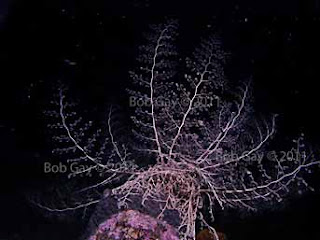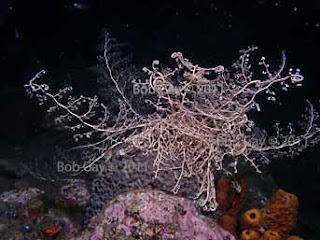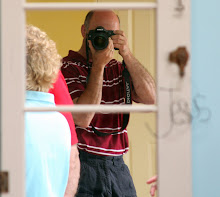The purpose of this post is to show an example of backscatter( particles in the water reflecting the strobe lighting back to the lens of the camera) and how trashy it makes the images. It is a tedious process cleaning the images but in most cases they can be cleaned to a useable state. Those examples can be found in the first two pictures. The third picture has been cleaned up to be much more visually appealing.
So far this post has been about capturing the image and post processing. Now I want to talk about the subject of the image, the basket star. Some of this was covered in that earlier 2009 post. The images in this post are successive, meaning there is an order. The first picture is the star as I first found it on the dark reef. After my modeling light was introduced to the star and the surrounding area it became a draw for many little organisms that are drawn to the light much like your porch light drawing moths and other things to your door. The star stretches itself out into the current to feed on those organisms that float past its tenicles. In the middle picture, beween the addition of my light and the immediate feeding of the star with those drawn organisms, the star begins to take on a narled looking state and reduces itself to a form you would normally see during the daylight hours. Its continued regression from its feeding state continues in the final picture. I hope it is interesting seeing the pictures and hearing about it, but it is even better in real time!









